$ 100,000 for the next stop? The bitterness of the world makes Bitcoin more brilliant
How bleak the world is, how colorful Bitcoin looks.
In 2019, Bitcoin's highest increase was nearly 300%. On an annual basis, Bitcoin has also doubled.
Starting in 2020, the price of bitcoin will increase by more than 40% in more than 40 days. Starting from around 7,000 USD at the beginning of the year, it broke through 10,000 USD on February 9 and has since hovered around 10,000 yuan.
Han has been taught to cut through the bones and look more towards the middle of the month. All signs seem to suggest that the bull market is here.
- Hedge fund managers: "deflation crisis" triggered by the Federal Reserve will cause Bitcoin to soar
- Data privacy dilemma: slow humanity in technology iterations
- Featured | Here are our top ten data discoveries for the crypto market in 2019
I. Supply side: halving output boosts scarcity
A big thrust of this bull market is that Bitcoin is about to halve its output.
According to the design principle of Bitcoin, Bitcoin's output is halved every 4 years. By May 2020, every Bitcoin that generates a block reward will fall from 12.5 to 6.25. Bitcoin comes out almost every 10 minutes, 24 hours a day. Therefore, after halving, the daily output of new bitcoins decreased from about 1,800 to about 900.
History will not repeat, but it is said that there will be similarities. Since its launch in January 2009, Bitcoin has been halved in November 2012 and July 2016, and the price has risen significantly and pulled back about one to three months before and after the halving. Therefore, as the halving of 2020 approaches, the market begins to think again.
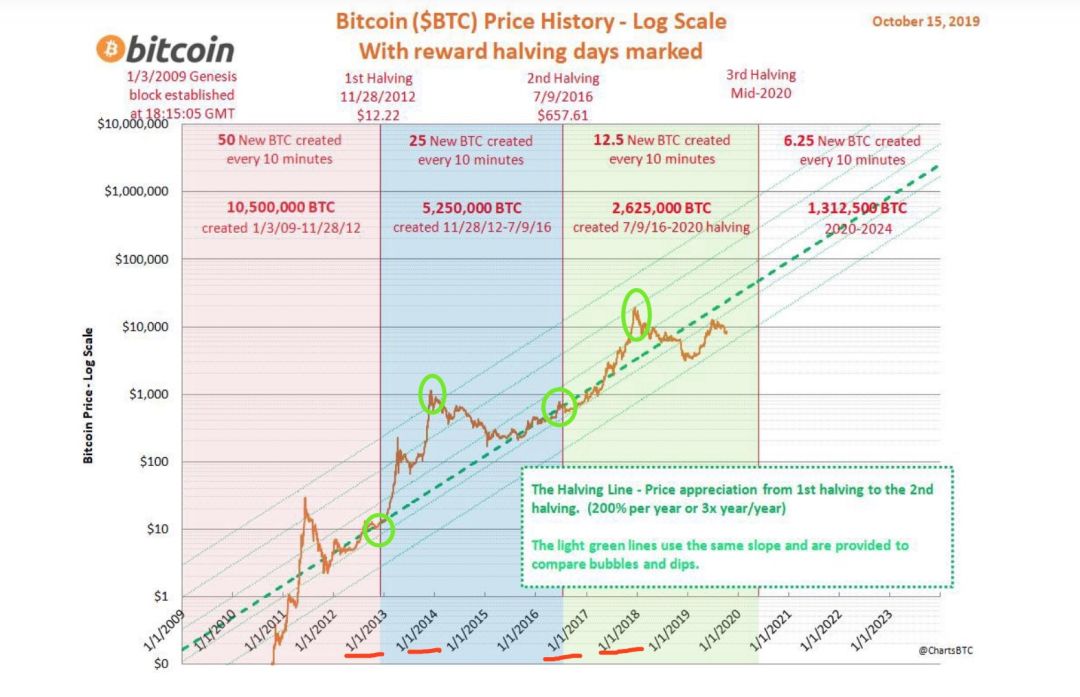
via.ChartsBTC
Because the output halving can be expected early, after the output halving in 2016, many people are full of expectations for the halving in 2020 and shouted the sky-high price target.
As a technology bull, security madman (McAfee) has said in 2017 that Bitcoin price will reach $ 500,000 in 2020.
Silicon Valley's well-known investor Tim Draper predicted in 2018 that the price of Bitcoin will rise to $ 250,000 in 2022. Draper invested in Tesla, Baidu, and Skype in the early days, and it was Silicon Valley old money. The result is close to $ 20,000
Because the predictions of these big men are only results and no process, their effectiveness is similar to fortune telling.
Instead, some data flow experts give models. Recently noticeable is an analyst named PlanB. In March 2019, he used a S2F model to analyze the price of bitcoin in a report and gave a bold prediction-after halving in 2020, bitcoin The price will touch $ 55,000.
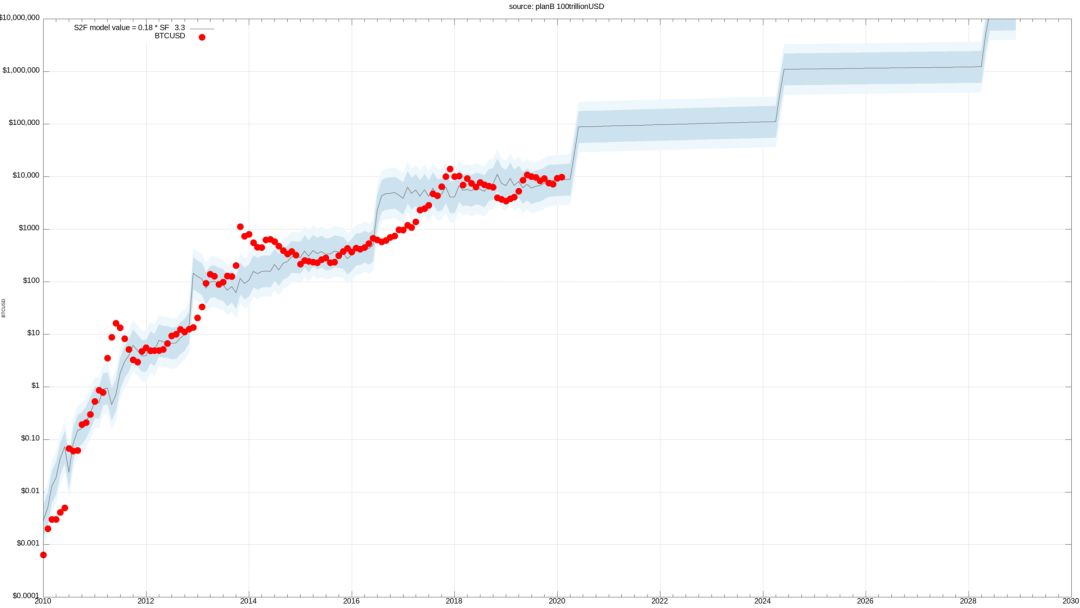
via.PlanB
The S2F model is cited by many institutions due to its high degree of fit, including well-known institutions such as Deutsche Bank and the US VanEck Fund.
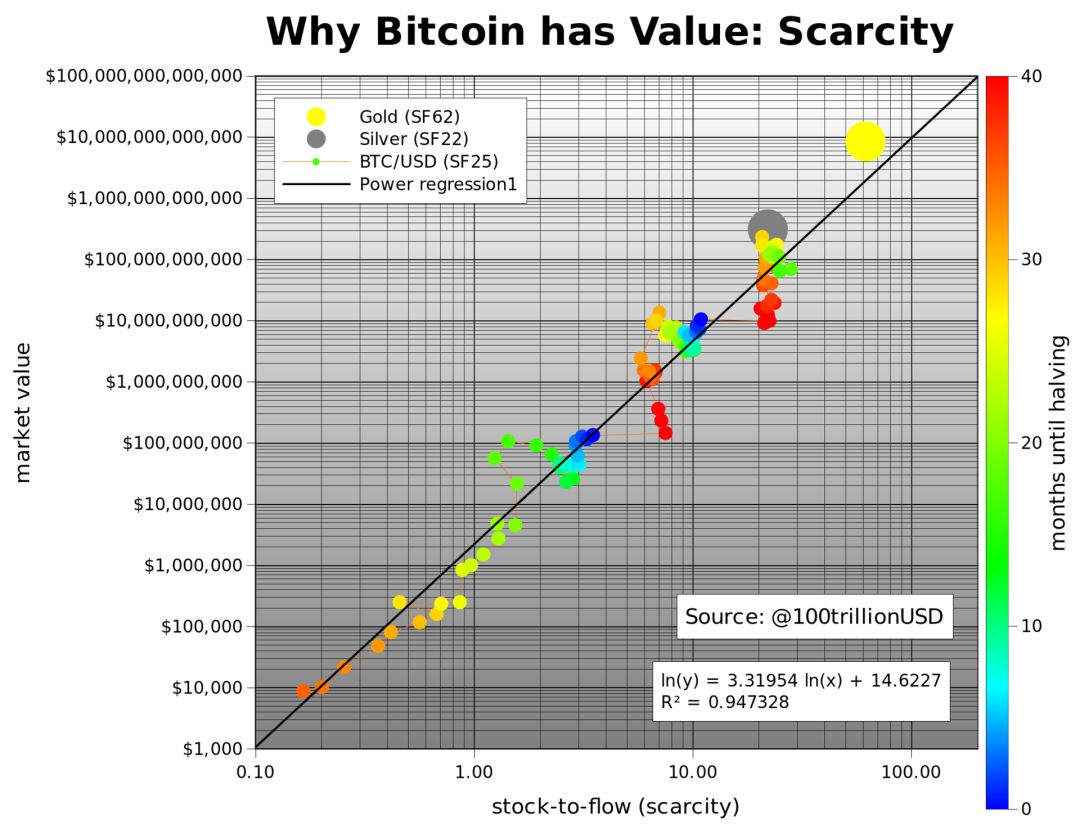
via.PlanB
PlanB did not provide the original data. In order to verify the model's credibility, the team of Star Joint Venture collected bitcoin data by hand to reproduce it, and the results basically matched. Regarding the recurrence and comments of the S2F model, we will discuss it in another article, and I will not repeat it here.
The S2F model has a clear logic, that is, the market value of Bitcoin is directly proportional to its scarcity. Scarcity is measured by the ratio of Bitcoin stock to annual output, that is, Stock divided by Flow, so it is called S2F. The significance of this value is the year required to accumulate the current stock according to the current annual output. The higher the S2F value, the more scarce it is.
The author estimates that gold S2F is 62 and silver SF is 22. Before halving in 2020, Bitcoin S2F is about 25.

via.PlanB
The S2F model fits very well, which is the main reason why many reports cite this model. The author said, "There is a significant statistical relationship between S2F and market value. The relationship between S2F and market value is caused by chance, and this possibility is almost zero." (A statistically significant relationship between stock-to-flow and market value exists. The likelihood that the relationship between stock-to-flow and market value is caused by chance is close to zero.)
We compare several models that quantitatively analyze the price of Bitcoin, and the S2F model is indeed the relatively perfect one.
The S2F model is also being refined. According to the latest forecast of PlanB, in the halving cycle from 2020 to 2024, the average price of Bitcoin will exceed $ 100,000.

via. PlanB twitter
Of course, the S2F model also has limitations. The key variable of the S2F model is scarcity. However, all bitcoin fork coins, such as BCH and BSV, have similar scarcity, but not all halving coins have a similar market value and price trend . So, although scarcity may be a key factor in market value, there are other factors that cannot be ignored.
What distinguishes Bitcoin from other halving coins is what we consider to be demand , and we will focus on analysis in the second part. Only when the demand is stable and increasing, and the demand side has sustainable purchasing power, the explanatory power of the S2F model has a foundation.
Demand side: stratified demand with rigid demand and speculation
Since entering the blockchain industry, we have contacted all kinds of currency people. According to their behavior characteristics, we can divide them into at least four categories of people, and their common behavior determines the price trend of Bitcoin:
| classification | representative | purpose | behavior | |
| Coin hoarder | Believers | Wu Jihan et al | Firmly believe that this is digital gold | Coin hoarding + investment |
| investor | Tim Drapper | Optimistic about long-term investment value | Coin hoarding + transaction supplemented | |
| trader | Speculator | Retail | Trying to get excess returns | transaction |
| user | U.S. Sanctioned Countries | Bypassing regulations to get dollars | Coin storage + use | |
by Xing Jie Ben Original
The first category is believers, who have a strong belief in Bitcoin based on reason, such as Wu Jihan and Zhang Nanzhang. Only in 2013, when the industry was quite uncertain, when they devoted themselves to Bitcoin startups, their behavior was mainly hoarding.
From the perspective of Bitcoin believers, Bitcoin is the gold of the digital world. It not only has many advantages of gold, such as not being controlled by any individual, government or individual, limited supply, and easy to convert into cash; there are no disadvantages of precious metals, such as It is not easy to carry and divide, and no government can interfere with the issuance of Bitcoin. In the words of Professor Zhang Shoucheng, the belief in Bitcoin originates from in math we trust .
Believers are somewhat anarchist or liberal. Therefore, Hayek's "Denationalization of Currency" was once known as the "biblical" of currency people. As long as the review history is long enough, the vast majority of fiat currencies cannot escape the fate of inflation, and many of them are ultimately worthless. Due to its inherent deflation and clear supply design, Bitcoin is considered a risk hedge asset for fiat currencies.
The number of believers is small, but they entered the circle early, the amount of coins stored is considerable, and a large amount of bitcoin has been deposited, reducing the supply of bitcoin. Mentality.

The second category is investors. Investors are not too enthusiastic about Bitcoin, but they will recognize the value of Bitcoin. For example, they have hedging properties and they use Bitcoin as part of their investment portfolio. Therefore, the behavior of investors is mainly coin hoarding, and the currency holding period is generally long.
Although Bitcoin has been imitated, it has not been surpassed so far. Because the biggest feature of Bitcoin is that without the founder, relying on consensus and the community to achieve "unmanned driving", which means that the survival of Bitcoin does not depend on anyone.
This strong vitality has made many investors consider it a necessary investment portfolio. VanEck stated in a report that the correlation between the price of Bitcoin and traditional investment targets is low , as shown in the table below. "A small amount of bitcoin allocation significantly increased the cumulative return of 60% of the stock and 40% of the bond portfolio, and this has had little effect on its volatility." VanEck's recommended allocation is 3%.
 via: The Investment Case for Bitcoin, 2020,1, VanEck
via: The Investment Case for Bitcoin, 2020,1, VanEck
We have already seen that family funds are beginning to allocate bitcoin assets, some are buying bitcoins directly, and some are investing in bitcoin mines. The characteristics of institutional investment are: first, the large amount of funds, the investment amount ranging from tens of millions to several hundred million yuan; the second is the long waiting period, generally 3 to 5 years, or even longer.
For example, the cryptocurrency asset management company Grayscale's 2019 annual report shows that it invested more than 600 million US dollars in 2019, exceeding its total investment from 2013 to 2018, and 71% of its investment in 2019 came from institutional investors.
A sufficiently long waiting period may better ensure that institutions benefit from Bitcoin investment. A study based on historical bitcoin data from 2010 to 2019 shows that investors buy bitcoin at any time compared to historical data on S & P (beginning 1950), gold (beginning 1980), and silver (beginning 1982). , Waiting for 3.38 years, the profit probability is 100%. In contrast, the S & P 500 takes 13 years, and gold and silver take longer. The forecast does not take inflation into account, and a dollar today is far less valuable than a dollar 20 years ago.
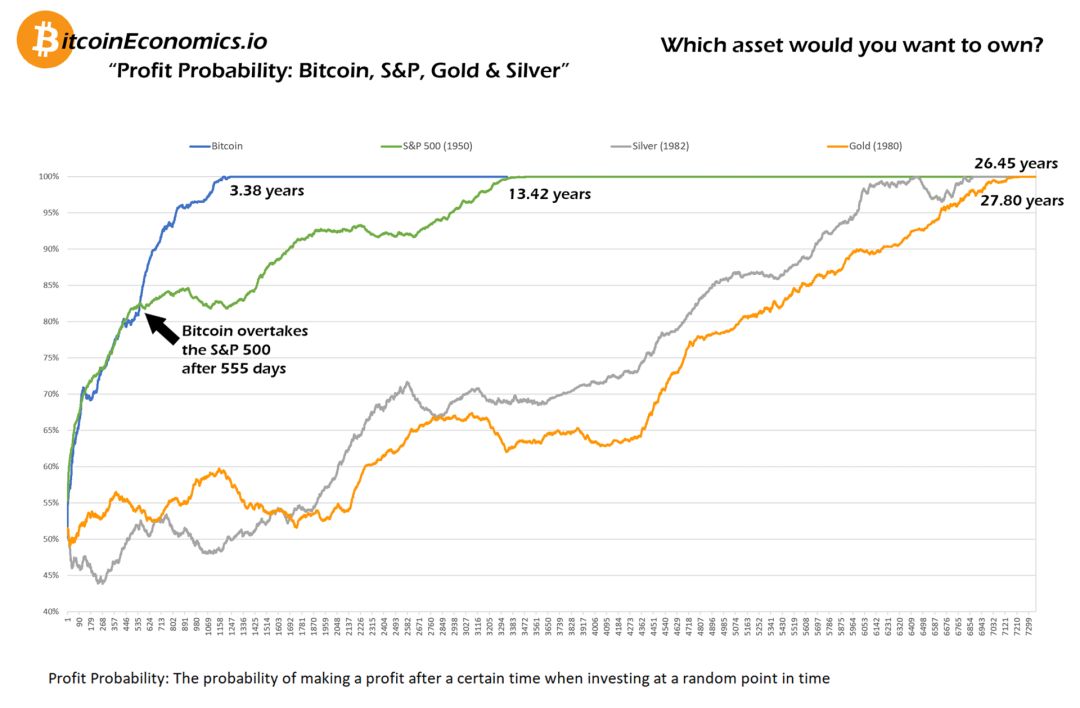
The third category is speculators. Including "retail" and quantitative traders, they are an important guarantee for liquidity. Such people do not necessarily understand or recognize Bitcoin, they see Bitcoin as an investment in stocks, and try to profit from swing operations, characterized by stop loss and take profit. As a result, their trading momentum is greater than that of coin hoarding.
Speculators are characterized by small positions. Since Bitcoin is anonymously traded, the number of coin owners is mainly judged from the number of active addresses. Active addresses refer to Bitcoin addresses that have transactions on that day. Since 2009, the number of Bitcoin active addresses has basically matched the price trend, and currently has reached about 700,000.
 via.bitinfocharts.com
via.bitinfocharts.com
The fourth category is users. In countries sanctioned by the United States and countries where the economy is rapidly deteriorating, Bitcoin is one of the channels for the public to preserve and increase their wealth.
A sample survey by survey company Statista in 2019 showed that citizens of many countries have started to hold cryptocurrencies such as Bitcoin. The top ten countries are all emerging market countries, including three BRICS countries. Although there are not many surveyed countries in the survey, it is enough to show that digital currencies, especially bitcoin, have become very popular in many countries.
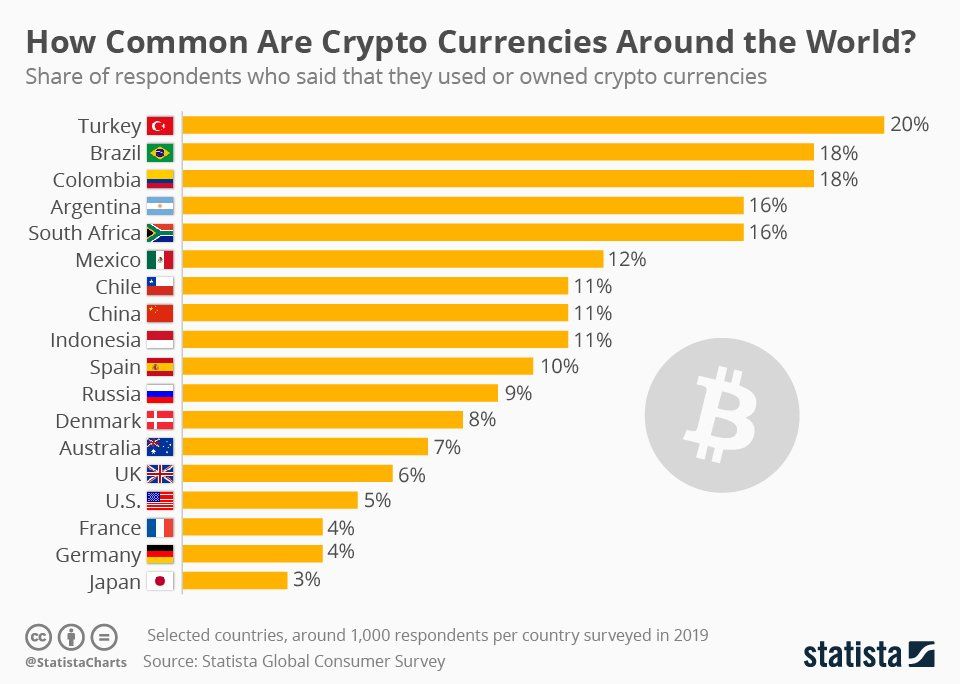
Bitcoin's risk aversion has also been recognized by capital. Cryptocurrency asset management company Grayscale's report in June 2019 shows that they selected 5 times of crisis, including Greece's withdrawal from the euro zone, China's economic downturn, Brexit, Trump's election and the Sino-US trade war. Asset performance, and as a result, Bitcoin's performance is uniform .
The following figure shows the performance of various assets during the Sino-US trade friction in May 2019, and the comparison of the Bitcoin price and the RMB exchange rate during the same period. Bitcoin's hedging properties are more obvious. In the other four events, Bitcoin's risk aversion performance was equally good.
 via. Grayscale
via. Grayscale
Not only that, on January 4, 2020, the United States beheaded Iran's senior officials. On January 8, Iran retaliated against US military bases, during which the price of Bitcoin rose in response.
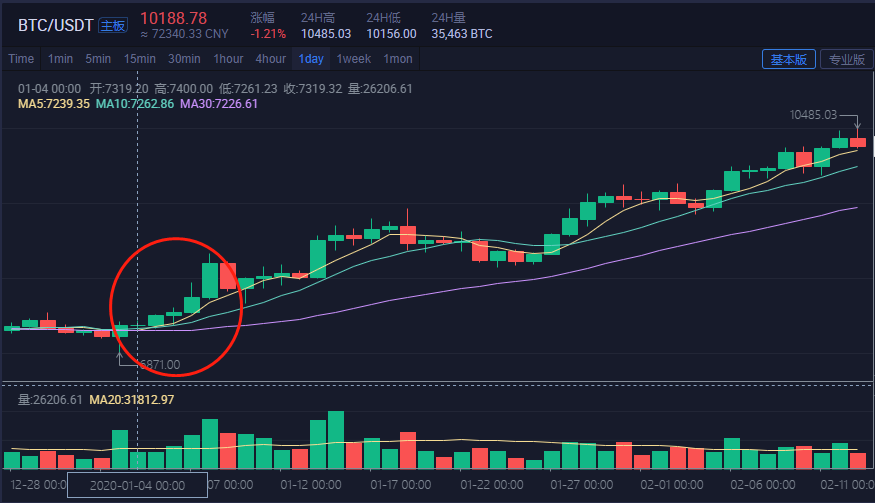
Bitcoin's risk aversion function and value storage function have been recognized and used by more and more people. Users are the direct beneficiaries of Bitcoin, and they are just-needed users in the Bitcoin market. Users will be hoarding and trading at the same time.
In the bitcoin market, believers and investors are the main hoarders, making bitcoin scarcity constantly rising, and users are the changing factors of bitcoin price. Every time a crisis occurs, it will cause the rise of bitcoin price This is the person who ultimately pays for Bitcoin, which also makes Bitcoin by no means air. Active traders are a guarantee of market liquidity.
Cautious optimism on Bitcoin price
After a qualitative analysis of the supply and demand sides, let us remain cautiously optimistic about the future of Bitcoin.
Because there are too many influential factors on the demand side and various types of data are very scattered, we have not found satisfactory quantitative indicators so far. Therefore, it is also difficult for us to provide a clear price forecast.
However, as long as Bitcoin is still functioning, as more and more people know it, demand will increase. It is a safe haven in the real world. How bleak the world is, how brilliant Bitcoin is.
We do not expect to benefit from tragedy, but if we cannot stop the tragedy, at least we have hope to choose.
The ultimate factors limiting bitcoin are that it is too expensive and the second is the emergence of alternatives.
The smallest unit of Bitcoin is "satoshi", which is 8 digits after the decimal point. If the price of Bitcoin is expensive enough that the price of Satoshi Nakamoto exceeds the capacity of incremental users, the rise of Bitcoin will come to an end. At present, Satoshi Bitcoin is about 0.0007 yuan, which is obviously far from unattainable.
Another factor that has killed Bitcoin is the emergence of alternatives. Bitcoin is not the first digital currency, nor is it the last. We are deeply awed by this.
The above only expresses our understanding of Bitcoin and does not constitute investment advice.
references:
1. Original S2F model:
https://medium.com/@100trillionUSD/modeling-bitcoins-value-with-scarcity-91fa0fc03e25
Chinese translation of S2F model report:
https://mp.weixin.qq.com/s/wIZYJVl-EdAGQuZeDHrGVA
2. Vaneck's report on the value of Bitcoin investments:
https://www.vaneck.com/globalassets/home/us/blogs/bm-blog-categories/vaneck-digital-assets–the-investment-case-for-bitcoin.pdf
Chinese translation:
https://www.chainnews.com/articles/672647331547.htm
3. Grayscale asset management report:
https://grayscale.co/wp-content/uploads/2019/06/Grayscale-Hedging-Global-Liquidity-Risk-with-Bitcoin-June-2019.pdf
Note: This article is an original analysis by Ye Jian and Zhang Daqi, research fellows of Star Joint Venture. For more opinions, please contact us by email.
[email protected]; [email protected].
We will continue to update Blocking; if you have any questions or suggestions, please contact us!
Was this article helpful?
93 out of 132 found this helpful
Related articles
- Perspective | ENS: Why We Choose Ethereum Over Another Stove
- Video | A "Blockchain Village" Story (Part 2)
- Depth | Beyond 2020: BTC Fundamentals Analysis
- Lingting: Under the disaster, the blockchain needs a "medical observation"
- Analysis: why Bitcoin will rise periodically around halving
- China files 84 patents for central bank digital currency
- Views | Gao Bin, China Communications Industry Association: After the epidemic, blockchain enables business






